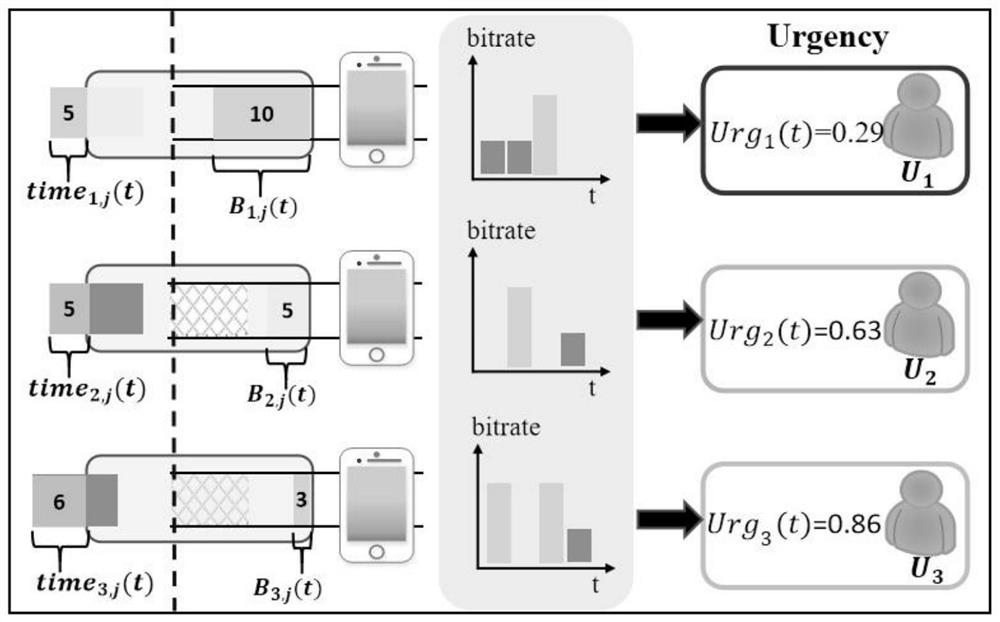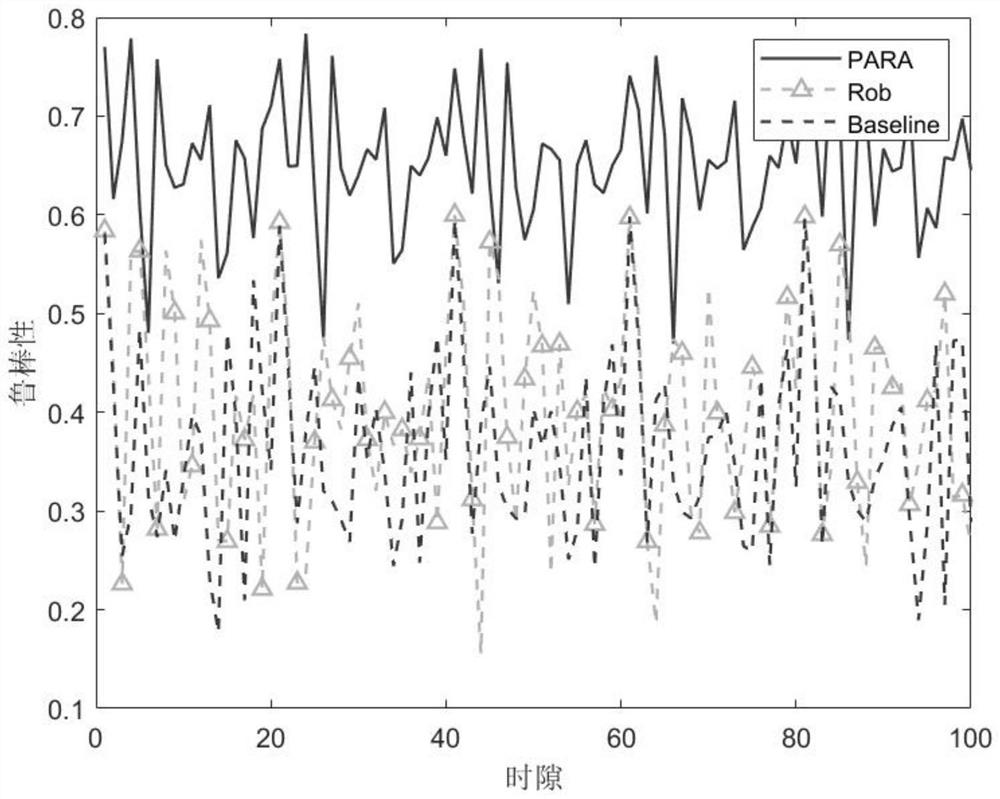Mobile video QoE (Quality of Experience) evaluation method based on adaptive degree
A mobile video and adaptive technology, applied in image communication, selective content distribution, electrical components, etc., can solve the problems of inaccurate QoE model evaluation scores, without considering the degree of adaptation of the base station side and the user side, etc., to achieve video services. Evaluate the effects of accurate, high accuracy and novel ideas
- Summary
- Abstract
- Description
- Claims
- Application Information
AI Technical Summary
Problems solved by technology
Method used
Image
Examples
Embodiment Construction
[0025] In order to more accurately evaluate the overall performance of QoE and the improvement over existing work, the proposed QoE method-driven radio resource allocation scheme PARA is compared with the other two methods. The first is that the Baseline method uses reinforcement learning tools to generate the wireless resource allocation scheme in the ABR video stream with the sum of the QoE of all users as the reward function. However, the Baseline QoE model considers the conventional video QoE influencing factors, i.e., the selected bit rate , freeze duration, and code rate switching times; while the QoE model takes into account user priority, the matching degree of code rate selection and wireless resource allocation, and the minimum switching interval. Then, refer to Rob's algorithm for user request interval awareness. The request interval is the time between the user's request and the beginning of the video clip download, during which time the user does not need wireless r...
PUM
 Login to View More
Login to View More Abstract
Description
Claims
Application Information
 Login to View More
Login to View More - R&D
- Intellectual Property
- Life Sciences
- Materials
- Tech Scout
- Unparalleled Data Quality
- Higher Quality Content
- 60% Fewer Hallucinations
Browse by: Latest US Patents, China's latest patents, Technical Efficacy Thesaurus, Application Domain, Technology Topic, Popular Technical Reports.
© 2025 PatSnap. All rights reserved.Legal|Privacy policy|Modern Slavery Act Transparency Statement|Sitemap|About US| Contact US: help@patsnap.com



